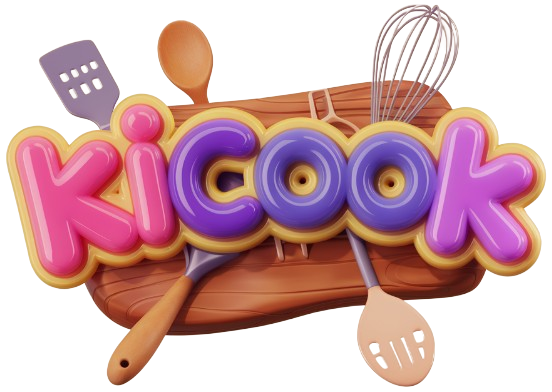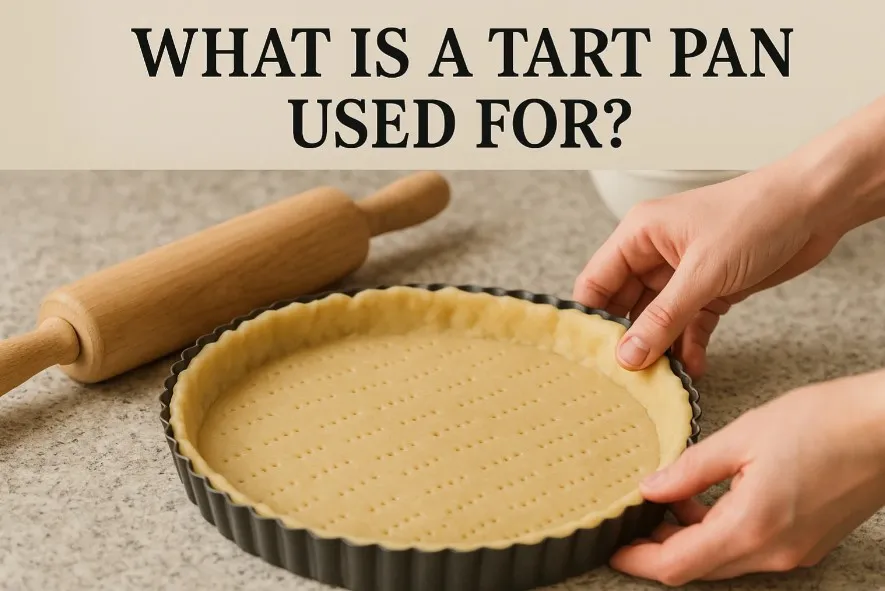A tart pan is designed for baking perfectly shaped tarts—its fluted edges and removable bottom create a professional finish while making it easy to release delicate crusts. It’s also great for quiches, pies, and even savory dishes, thanks to its even heat distribution and sleek presentation!
If you’d told me a few years ago that a tart pan—with its wobbly removable bottom—would end up being my MVP in the kitchen, I’d have laughed. Back then, I was a ‘pie dish only’ loyalist. That all changed the day my lemon tart got stuck and crumbled like my dreams. One desperate online search later, I bought a tart pan. My first experiment was iffy, but what happened next? That’s where things got interesting…
Tart Pan Features: More Than Just a Pretty Face

When I first picked up a tart pan, I’ll admit, I thought it was just another pretty piece of bakeware. But as I started using it, I realized the features packed into this simple tool make all the difference. Tart pan features go far beyond looks—they’re designed for easy release, even baking, and that professional presentation everyone craves.
Removable Bottom: The Secret to Easy Release
The removable bottom is, hands down, my favorite feature. It’s the difference between holding your breath as you flip a pie tin and confidently sliding out a perfect tart. Research shows that tart pans with removable bottoms provide easy release and a bakery-quality finish. There’s no wrestling with a spatula or risking a cracked crust. Just push up from the base, and the tart lifts out, edges intact. It’s a tiny design tweak that saves bakes—and nerves.
Nonstick Coating: Fewer Disasters, Less Cleanup

If you’ve ever had a tart stick to the pan, you know the heartbreak. That’s where a nonstick coating comes in. Not only does it help with easy release, but it also means less elbow grease when cleaning up. Studies indicate that nonstick coatings reduce sticking and cleaning effort, so you spend more time enjoying your tart and less time scrubbing. It’s a small upgrade that makes a big difference, especially when you’re baking for a crowd or tackling a tricky recipe.
Material Matters: Aluminum and Stainless Steel Reign
After trying pans of all kinds, I’ve learned that aluminum pans and stainless steel options aren’t just for show. These materials offer even heat distribution, which is crucial for a perfectly cooked crust. No more burnt edges or soggy bottoms—just golden, crisp pastry every time. Research supports this, showing that aluminum and stainless steel pans support even heat distribution for better results.
Professional Presentation: Fluted Edges and Unique Shapes
Tart pans often come with fluted edges or unique shapes, adding a touch of elegance to any dessert. That little detail turns a simple bake into something that looks straight out of a bakery window. As Julia Child once said:
‘Honestly, after my first tart came out in one unbroken piece, I was hooked.’
| Feature | Benefit | Research Insight |
|---|---|---|
| Removable Bottom | Easy release, professional presentation | Ideal for bakery-quality finish [1][3][5] |
| Nonstick Coating | Reduces sticking and cleaning effort | Makes tart removal and cleanup easier [2][4] |
| Aluminum & Stainless Steel | Even heat distribution | Supports perfectly cooked crust [2][4] |
Beyond Tarts: Offbeat Adventures and Everyday Wins

When I first picked up a tart pan, I thought I’d use it for the occasional fruit tart and nothing more. Turns out, I was missing out. The more I experimented, the more I realized how many Tart Pan Uses there really are—especially when it comes to savory dishes and creative baking adventures.
Quiche was my gateway. There’s something about the way a tart pan shapes a quiche—crisp edges, even browning, and that professional look. I get why Ina Garten said,
‘Once you use a tart pan for quiche, it’s tough to go back to a pie plate.’
She’s right. The removable bottom makes it so easy to serve, and the fluted sides just look better on the table.
But the real fun started when I branched out. Mini tart pans, like the USA Pan mini fluted set, changed the game for me. Suddenly, I could make Mini Tarts for brunch, single-serving quiches, or even little breakfast bakes with eggs and veggies. They’re perfect for parties, or just for those days when everyone wants something different.
And then there were the experiments. I swapped my usual brownie pan for a tart pan—instant upgrade. The brownies had crisp edges and looked fancy with almost no extra effort. Pizza bites? Same story. The tart pan’s heat resistant design (think aluminum or stainless steel) gives a more even bake than some of my older pans. Research shows that tart pans support a broader range of uses compared to pie dishes, and I’m inclined to agree.
Of course, not every adventure is a win. There was the infamous day my quiche slid across the counter—removable bottoms are great, but they do require some finesse. Lesson learned: always support the base!
Cleanup is another plus. Many tart pans are labeled dishwasher safe, but I’ve found that gentle hand washing keeps them in better shape over time. Nonstick coatings help, too, making tart removal and cleaning a breeze.
| Tart Pan Type | Best For | Notes |
|---|---|---|
| Mini Tart Pans (e.g., USA Pan mini fluted) | Single servings, parties, creative experimentation | Great for mini tarts, quiches, and breakfast bakes |
| Larger Tart Pans (e.g., Nordic Ware 10-inch) | Feeding a crowd, classic tarts, quiches | Ideal for family-sized recipes |
| All Tart Pans | Sweet and savory recipes, including quiche | Versatile baking equipment for any kitchen |
“A good tart pan is like a trusted friend in the kitchen—it never lets you down.” – Julia Child
Choosing the Best Tart Pan: Lessons from Trial, Error, and Stubbornness
I never thought I’d become someone who cared about tart pans. For years, I used whatever was in the back of my cabinet—usually a battered cake tin or a pie dish that had seen better days. But after a few soggy-bottomed tarts and crusts that clung stubbornly to the pan, I realized I needed to pay attention to this overlooked baking essential. Choosing the Best Tart Pans turned out to be more complicated—and rewarding—than I expected.
Material Face-Off: Aluminum vs. Stainless Steel vs. Nonstick

My first real tart pan was aluminum. The difference was immediate. Research shows that Aluminum Pans and Stainless Steel pans distribute heat evenly, which means your crust bakes through without burning the edges. I learned the hard way that nonstick coating is a double-edged sword. Sure, it makes tart removal a breeze—especially for sticky desserts or delicate fillings—but over time, that coating can wear off if you’re not gentle. I started hand washing my pans (as studies indicate, this extends their lifespan) and treating them with a little more respect.
Shape Matters: Round, Rectangular, High-Walled, Fluted
I used to think a tart pan was a tart pan. Not so. The fluted edges on my next purchase gave my bakes a professional look, and the removable bottom became my secret weapon for perfect presentation. There’s something satisfying about lifting a tart out of its pan with clean, sharp edges. Then there’s the matter of shape—round pans are classic, but when my neighbor brought a rectangular lemon tart to a block party, it was a showstopper. Now, I keep both shapes on hand for different occasions.
What I Wish I’d Known: Buying Mistakes and Triumphs
- Don’t skimp on quality. As Martha Stewart says:‘Don’t skimp on pan quality—your tart will show it.’
- Look for a sturdy removable bottom. It’s not just a gimmick—it’s a game changer for getting clean slices.
- Proper care matters. Hand washing and gentle handling keep pans in top shape, especially those with nonstick coating.
- Presentation counts. Fluted or rectangular pans add visual appeal, and sometimes that’s half the fun.
Choosing the right tart pan isn’t just about function—it’s about elevating your baking and making every tart a little celebration.
Wild Card: The Tart Pan as a Metaphor for Life, or How Baking Heals Perfectionism
I never expected a simple baking tool to change the way I see both my kitchen and myself. Yet, the humble tart pan—with its removable bottom and fluted edges—has quietly become my secret weapon, not just for baking, but for living. When I first added a tart pan to my collection of baking essentials, I was focused on the technical advantages: easy release, even heat distribution, and that professional finish. But over time, I realized the true tart pan benefits go far beyond perfect crusts.

No bake ever goes exactly to plan, and I’ve learned that having the right pans helps you roll with it. The tart pan, in particular, is a lesson in flexibility. Its removable bottom means that even if the crust cracks or the filling overflows, I can still gently lift the tart out, piece it together, and serve it with pride. Research shows that tart pans with nonstick coatings and quality materials like aluminum or stainless steel make this process even smoother, reducing stress and cleanup. But the real magic, I’ve found, is how this forgiving design encourages me to embrace imperfection.
There’s something liberating about seeing an imperfect tart—maybe a little uneven, maybe patched together—still impress guests and taste wonderful. As Nigella Lawson once said,
‘Baking with a tart pan has taught me to embrace a little mess—it usually tastes wonderful anyway.’
That sentiment rings true every time I pull a tart from the oven and realize it doesn’t have to be flawless to be enjoyed.
Baking isn’t just about food. It’s about resilience, patience, and a dash of daring. Each time a tart sticks or a crust cracks, I’m reminded that beauty often comes from the unexpected. If a tart can be rescued after sticking, maybe a day can too. The tart pan, with its forgiving nature, has become a symbol for creative adaptability in my kitchen. Imagine if we all had a tart pan in our toolbox—maybe we’d stress less about flawless results and appreciate the joy of the process. In the end, that’s what makes the tart pan an essential: not just for baking, but for life itself.
“Baking is a science, but the right tools make it an art.” – Mary Berry
Frequently Asked Questions
Can I use a pie pan instead of a tart pan?
Yes, but the results differ. Pie pans are deeper, while tart pans give a crispier, more structured crust.
How do I prevent my tart crust from sticking?
Grease the pan well or use parchment paper. Non-stick pans also help.
What’s the best way to clean a tart pan?
Hand wash with mild soap, especially for non-stick and ceramic pans.
Can I freeze tarts in the pan?
Yes, but remove the tart from the pan once frozen to avoid moisture buildup.
Helpful Tart Baking Tips
- Chill the Dough – Prevents shrinking during baking.
- Blind Bake – Pre-bake the crust for fillings that don’t need cooking.
- Use a Food Processor – Makes mixing dough faster and more consistent.
“The secret to a great tart is patience and the right pan.” – Paul Hollywood
Conclusion
Now that you know what a tart pan is used for, you’re ready to bake like a pro! Whether making a classic fruit tart or a savory quiche, the right tart pan makes all the difference. Choose one that fits your needs, follow simple baking tips, and enjoy delicious, picture-perfect tarts every time.
Happy baking!

